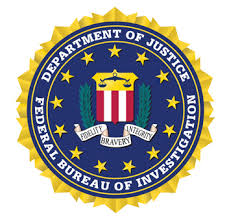Financial Institution Fraud

January 29, 2015 – Federal Burea of Investigation (FBI)
Financial institution fraud (FIF) investigations are among the most time-consuming white collar cases undertaken by law enforcement. Separate from mortgage fraud, FIF involves a variety of internal and external schemes perpetrated across varying platforms against traditional retail banks, credit unions, and other federally-insured financial institutions. Externally, some common schemes include check fraud, mail/wire fraud, check kiting, counterfeit instruments, and e-mail hacking leading to loss. Embezzlement and misapplication of funds are two of the more common internal schemes identified in FBI investigations. And when the fraud is egregious enough, it can lead to the complete failure of the federally-insured financial institution.
Criminals use a variety of techniques and platforms to commit FIF. Financial Institutions increasingly rely upon new technologies such as online banking, point-of-sale systems, and contactless payments to conduct everyday business, and there’s also been an increase in the number of third-party check-cashing services and bank holding companies who provide services to the general public. These novel technologies, combined with the increased number of financial institutions, have given illicit actors more opportunities to engage in criminal activities.
The FBI works closely with various law enforcement and regulatory entities to combat FIF. We collaborate with our partners at IRS-Criminal Investigative Division, Department of Homeland Security-Homeland Security Investigation (DHS-HSI), Financial Crimes Enforcement Network (FinCEN), and numerous other federal, state, and local law enforcement and regulatory agencies. This coordination allows each entity to use its respective expertise and authority to more effectively combat FIF.
The Bureau also fosters relationships and partnerships within the banking industry to promote FIF awareness. To raise overall awareness and increase accessibility to investigative personnel, we have designated points of contact with entities like the National Bank Fraud Working Group, local bank fraud working groups, and suspicious activity reports (SAR) working groups across the nation. Included among these working groups are federal, state, and local law enforcement partners; regulatory industry representatives; and banking industry representatives.
In FIF investigations, we continue to concentrate our efforts on organized criminal groups often involved in the sale and distribution of stolen and counterfeit corporate checks, money orders, payroll checks, credit and debit cards, U.S. Treasury checks, and currency. Furthermore, the groups involved in check and loan fraud schemes are often involved in illegal money laundering activities in an effort to conceal their illegal proceeds. The FBI often uses asset forfeiture statutes to seize and forfeit the proceeds of criminal activity.
Like many other crimes, FIF has evolved over time. And the FBI combines the reporting and collection abilities of our financial crimes and money laundering intelligence units—with their complementary operational units—to identify trends and gaps in the banking industry which make financial institutions susceptible to criminal activity.
For more information, visit https://www.fbi.gov/about-us/investigate/white_collar/financial-institution-fraud






